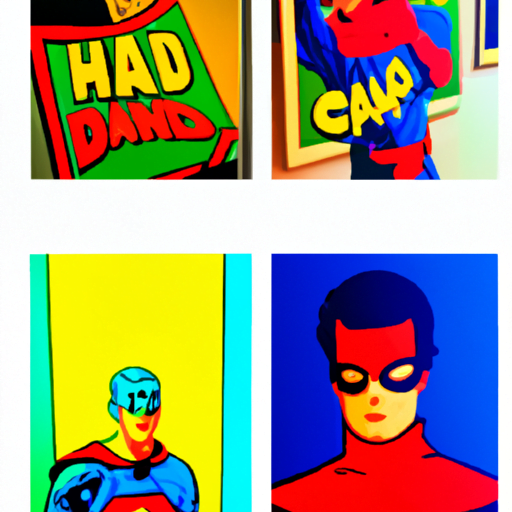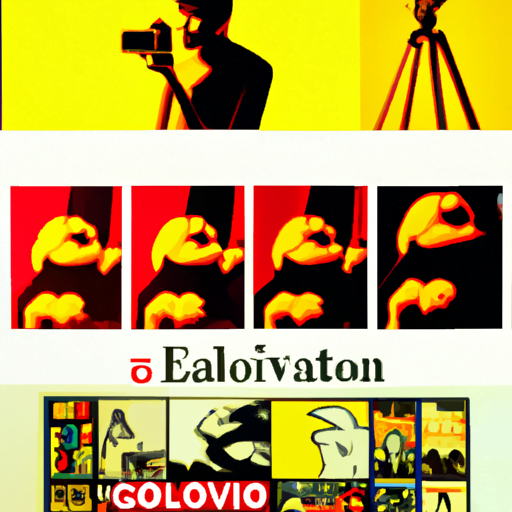
-
Table of Contents
- The Evolution of Comic Book Art and Its Influence on Design
- The Early Days: The Birth of Comic Book Art
- The Golden Age: Pioneering Styles and Techniques
- Case Study: Jack Kirby’s Impact on Design
- The Silver Age: Pop Art and Experimentation
- Case Study: Roy Lichtenstein’s Influence on Design
- The Modern Era: Digital Revolution and Beyond
- The Influence on Design: From Comic Books to Everyday Life
- 1. Visual Storytelling
- 2. Dynamic Composition
- 3. Color and Typography
- 4. Character Design
- Summary
The Evolution of Comic Book Art and Its Influence on Design

Comic books have been a beloved form of entertainment for decades, captivating readers with their unique blend of storytelling and visual art. Over the years, comic book art has evolved significantly, reflecting changes in artistic styles, technology, and cultural influences. This evolution has not only shaped the world of comic books but has also had a profound impact on the field of design. In this article, we will explore the fascinating journey of comic book art and its influence on design.
The Early Days: The Birth of Comic Book Art
The origins of comic book art can be traced back to the late 19th century when sequential art storytelling began to emerge. Artists like Richard Outcault and Winsor McCay pioneered the use of sequential panels to tell stories in newspapers and magazines. These early works laid the foundation for what would later become the comic book medium.
One of the most significant milestones in the evolution of comic book art was the introduction of Superman in 1938. Created by Jerry Siegel and Joe Shuster, Superman revolutionized the industry with his dynamic poses and powerful physique. This iconic character set the stage for the superhero genre, which would dominate comic book art for decades to come.
The Golden Age: Pioneering Styles and Techniques
The 1940s and 1950s marked the Golden Age of comic book art, characterized by bold and vibrant illustrations. Artists like Jack Kirby and Will Eisner pushed the boundaries of the medium, experimenting with dynamic layouts, exaggerated perspectives, and dramatic lighting.
During this period, comic book art heavily influenced other forms of visual media, such as advertising and poster design. The larger-than-life characters and eye-catching compositions captivated audiences and became a source of inspiration for many designers.
Case Study: Jack Kirby’s Impact on Design
Jack Kirby, often referred to as the “King of Comics,” was a prolific artist who co-created many iconic characters, including Captain America, the Fantastic Four, and the X-Men. His bold and energetic style revolutionized comic book art and left a lasting impact on design.
Kirby’s use of dynamic poses, exaggerated anatomy, and intricate machinery created a sense of motion and excitement in his artwork. His work was not only visually stunning but also conveyed a strong sense of storytelling. Many designers drew inspiration from Kirby’s style, incorporating his dynamic compositions and bold lines into their own work.
The Silver Age: Pop Art and Experimentation
In the 1960s, comic book art entered the Silver Age, marked by a shift towards a more stylized and experimental approach. Artists like Roy Lichtenstein and Andy Warhol drew inspiration from comic book panels, incorporating their bold colors and iconic imagery into their pop art masterpieces.
This cross-pollination between comic book art and fine art had a profound influence on design. The use of bold colors, halftone patterns, and speech bubbles became popular in various design fields, including graphic design, fashion, and advertising.
Case Study: Roy Lichtenstein’s Influence on Design
Roy Lichtenstein was a prominent figure in the pop art movement, known for his paintings that mimicked the style of comic book panels. His use of bold primary colors, thick black outlines, and Ben-Day dots became synonymous with the pop art aesthetic.
Lichtenstein’s work not only popularized the use of comic book-inspired imagery in fine art but also influenced graphic design. His distinctive style was often imitated in advertisements, album covers, and even fashion. The impact of Lichtenstein’s work can still be seen in contemporary design, with many designers drawing inspiration from his bold and graphic approach.
The Modern Era: Digital Revolution and Beyond
The advent of digital technology in the late 20th century brought about a new era in comic book art. Artists began to embrace digital tools, allowing for greater flexibility and experimentation. Digital coloring, 3D modeling, and digital inking became common practices, pushing the boundaries of what was possible in comic book art.
With the rise of the internet and social media, comic book art has become more accessible than ever before. Artists can now share their work with a global audience, and fans can engage with their favorite creators directly. This increased visibility has led to a greater diversity of styles and storytelling approaches in comic book art.
The Influence on Design: From Comic Books to Everyday Life
The evolution of comic book art has had a profound influence on the field of design. Its impact can be seen in various aspects of everyday life, from advertising and branding to fashion and product design.
1. Visual Storytelling
Comic book art has perfected the art of visual storytelling, using sequential panels to convey narratives. This approach has been adopted by designers in various fields, such as web design and user experience (UX) design. The use of visual cues, hierarchy, and flow in comic book art has informed the way designers create engaging and intuitive user interfaces.
2. Dynamic Composition
The dynamic compositions and exaggerated perspectives in comic book art have inspired designers to create visually striking layouts. Whether it’s a magazine spread, a movie poster, or a website design, the principles of comic book art can be seen in the use of diagonal lines, overlapping elements, and dramatic angles.
3. Color and Typography
Comic book art is known for its bold use of color and expressive typography. Designers have embraced these elements, using vibrant color palettes and playful typography to create eye-catching designs. The influence of comic book art can be seen in various design fields, including graphic design, advertising, and packaging design.
4. Character Design
Comic book art has given birth to countless iconic characters, each with their own unique visual identity. The art of character design, whether it’s for video games, animation, or branding, draws inspiration from the rich history of comic book art. Designers strive to create visually compelling and memorable characters that resonate with audiences.
Summary
Comic book art has come a long way since its humble beginnings, evolving from simple newspaper strips to a powerful medium that has influenced design across various fields. From the Golden Age pioneers to the digital revolution, comic book art has continuously pushed the boundaries of visual storytelling and aesthetics.
The influence of comic book art can be seen in the way designers approach visual storytelling, composition, color, typography, and character design. Its impact on design is undeniable, shaping the way we communicate, entertain, and engage with the world around us.
As comic book art continues to evolve, it will undoubtedly inspire future generations of designers, pushing the boundaries of creativity and innovation. The journey of comic book art and its influence on design is far from over, and we can’t wait to see what the future holds.
